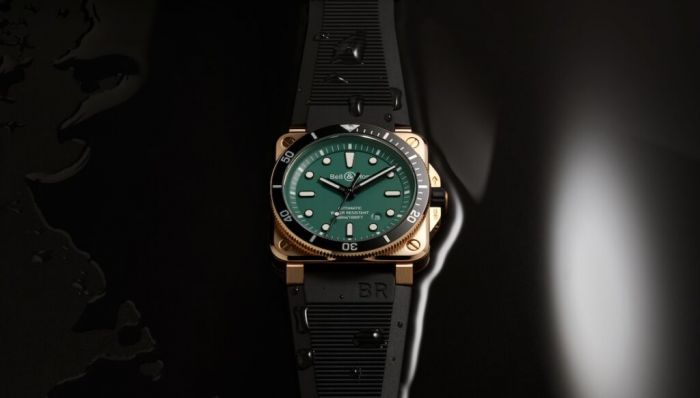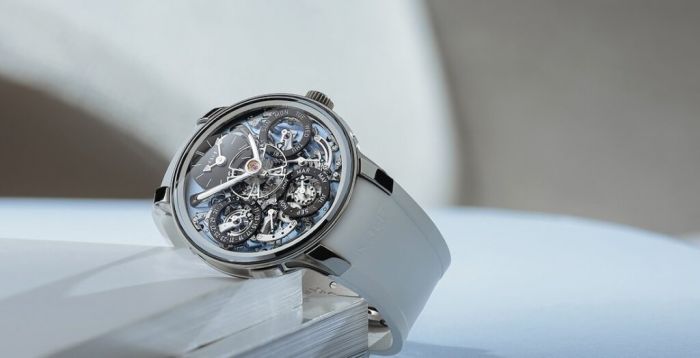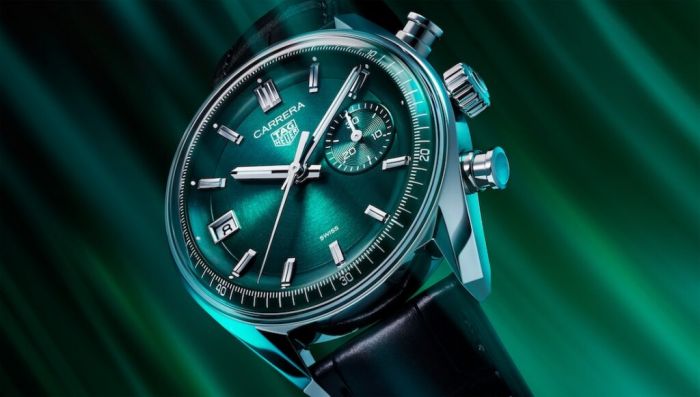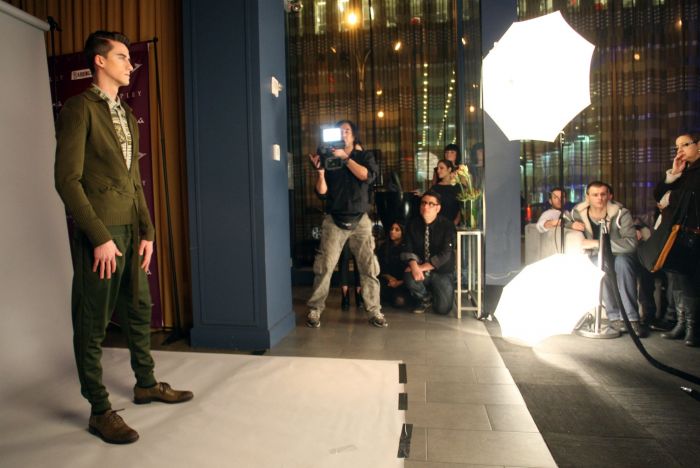
The world of modeling is as glamorous and as high-profile as it gets. Beautiful men and women jet around the world having their photos snapped for major labels, or walk the runways in some of the biggest shows in the business. It’s a dream job for many, but it's also a double-edged sword. The modeling industry is continuously coming under fire for a number of issues ranging from body image to sexual harassment. It’s the subject of an ongoing discussion that has sparked public outcry, numerous lawsuits, and backlash against designers and the industry as a whole. But despite hearing about how models are too skinny or how some photographers take advantage of vulnerable young women, we never hear much about male models.
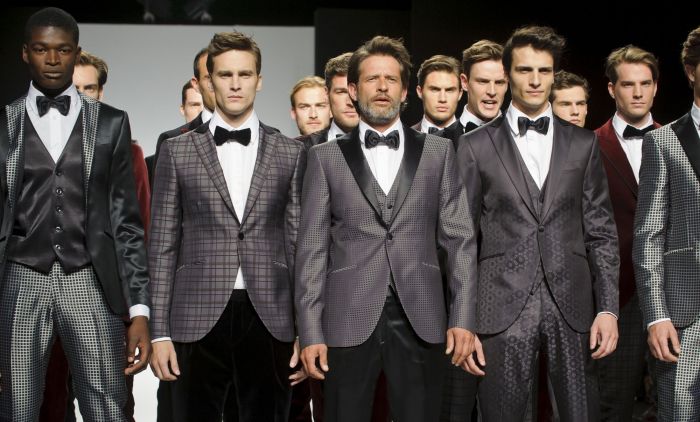
Male models go almost unnoticed in the fashion world. They pose beside the Cara Delevingnes and Adriana Limas of the industry, seen as more of an accessory than a name, and tend to fall off the radar when topics of eating disorders, sexual harassment and even ageism come up. Is the world of male modeling completely devoid of the same matters that plague their female counterparts? Unlikely. To figure out what was going behind the scenes, we spoke with industry insiders to get a better idea of what’s happening in the world of male models.
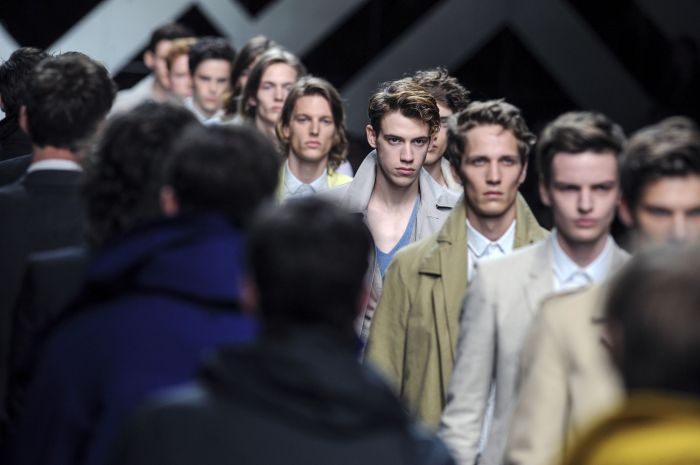
After modeling for almost 20 years, Dale Noelle founded True Model Management which represents a large number of both male and female muses. True Model Management's consultant for the men's division, Anthony Higgins, has been in the industry for almost 18 years and has seen it all—starting with the pressure men face daily to stay thin and maintain their physiques. “Male models have just as much scrutiny as female models do as far as keeping their bodies and their measurements on point,” he explained. “They get measured and they have to stay within a half inch. We’ve been growing our men’s department quite a bit and we have lots of different guys working all the time, but whether they’re an extra-large or they’re a small they still have to be within their measurements.”
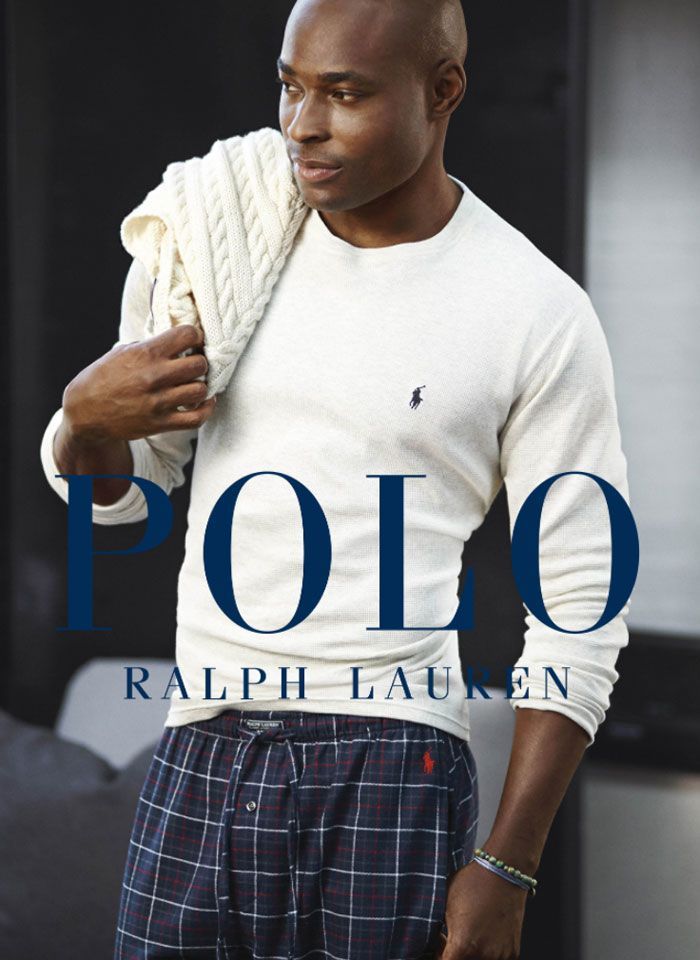
Model Willie Holmes agreed. “They want guys to be interchangeable pretty much, everyone should be able to hop inside the same clothes and fit them all. When you come around and you have too much going on with your body or size or [you’re] not like the average model, it can be a little bit of a problem.” Holmes, who’s signed with Wilhelmina Models, has posed for Polo Ralph Lauren, GQ, Men’s Fitness, a number of national ads, and walked in major runway shows over the years. As a fitness model, he adds that size and weight issues can be a little harder for him to manage, but even in his more stringent line of work it’s still rare for him to see men with eating disorders and body issues. “We all deal with the same thing: size issues, body issues, a certain representation on the runway. But I think it’s a little more lax for guys,” Holmes added.

But body diversity is slowly making an impact on male modeling. The all-American boy of yesterday is being traded in for an edgier, more diverse type of man. “There’s always going to be the traditional, sort of good looking, rugged male model. You know, the 6’ to 6’3” regular 40 long, they’re always going to be working, but I think some of the trends we’re seeing, there’s a little bit more diversity,” Higgins told us. “When you have people in our culture, like Seth Rogan and Jack Black— guys that are like super popular. It’s not just the Bras Pitts and the Zac Effrons.” It’s a great improvement that has yet to make the same impact in the women’s modeling industry.

The modeling industry is not as forgiving when it comes to sexual harassment. While men are less likely to share their experiences, the problem is almost an epidemic for them. “Males models get more harassed than the females do,” explained Higgins. “When I started working with male models I was shocked and horrified at how much photographers and some clients try to get away with. And it was far worse than what I’d experienced [with female models]. I actually had to call photographers into the office to speak with the owner of the agency or—I mean, it was harassment boarding on, you know, just a lot of inappropriate behavior.” This included everything from inappropriate sexual suggestions, to touching, propositioning and even blackmail. Higgins recalled numerous times where models were told that they had to either strip for nude photos or the images shot that day wouldn’t make the final campaign. Some guys came back to him in tears, not knowing what to do, others conceded.

“I’ve seen a lot,” Holmes confessed. “I know that a very large portion of modeling—it’s about sex, and sex sells and people want the fantasy and they create the fantasy and that’s what guys, girls, whoever [want].” Unfortunately a lot of people in positions of power abuse it to take advantage of young men in the industry. “Some of these photographs are super successful and they get away with crazy stuff because they are who they are,” explained Higgins. “One name I will use is Terry Richardson. I did work at an agency that worked with him and some of the girls had said that he had exposed himself to them, and there are articles on it. There was a cover of New York Magazine on it. For that one Terry Richardson there are probably 20 photographers that do that to male models.” That’s a staggering number when one considers the ratio of male to female models in the industry.

And for many of these young men, saying no isn’t an option. In such a competitive business one word from a famous photographer can make you the new Gucci poster boy or land you on the back of a Walmart catalogue, so they allow the harassment to continue and agree to whatever they’re asked. It doesn’t always work in their favor. “They don’t realize the ramifications. Then they start to feel bad about themselves because they were abused, they were forced to do something they don’t want to do,” explained Higgins. “Whether they’re gay or straight it doesn’t matter, if someone’s exposing [themselves] to you and you don’t want that attention, but you think you won’t be able to further your career—it’s the whole casting couch thing.”

Noelle and Higgins explain that at True Model Management their photographers are vetted, and they don’t send their teenage models to anyone they don’t know. But Higgins still preps them just in case. “I tell the models, you have to have a strong backbone and never do anything that you don’t want to do. I always tell them, if you don’t want your grandma or your mom and dad to see those pictures, don’t take them.” Of course that’s easier said than done when you believe your career is riding on the line. “Unfortunately there are some agents that allow things to go on, and there are models that go unsuspecting and there are models that go willing. It’s a whole culture, that is to me, sad,” said Higgins. “A good model should be able to work based on their merit.”

Despite the prevalence of sexual harassment, male models are leagues ahead of their female counterparts when it comes to career longevity. While women have a tendency to become less popular as they get older, men can book campaigns well past what the industry normally considers to be a model’s prime. “We just signed a man that is 56 years old and he actually has a really great body,” Higgins laughed. “He’s doing more fashion and fitness stuff, we just booked him for a job last weekend. Older is typically okay.” He attributes this acceptance to the growing interest in fashion over the past few years, noting that with the expanse of social media, men are better able to access global fashions and in turn better express themselves through fashion. “I think there’s more individuality—men are not afraid to break out of a mold.”

In the future Noelle would like to see male models better represented by a man that people could look up to. “One thing I would like to see though—we really don’t have any male supermodels that could be good role models for people in general,” she explained. “Now that they’re starting with Men’s Fashion Week there might be the rise of a few household names.” Higgins agreed, noting that most people, even those closely following fashion may not know the biggest names in the industry like Sean O’Pry, David Gandy and Chad White. “Giselle is definitely somebody that pretty much everyone would know. I don’t think you have a male counterpart,” he added.

Despite the ups and downs of the industry, it’s agreed upon that both female and male models face many of the same challenges and setbacks, some are just voiced louder than others. But improvements can be made to better not only the working condition of male models but the industry as a whole. “The representation percentage for white versus non-white is pretty low when it comes to runway, and after a certain age the percentage also drops pretty low,” Holmes noted. “Older and non-whites have a very low representation. I hope it will change, I’m never a pessimist but there’s been a lot of talk about it every Fashion Week, but it hasn’t changed.”











